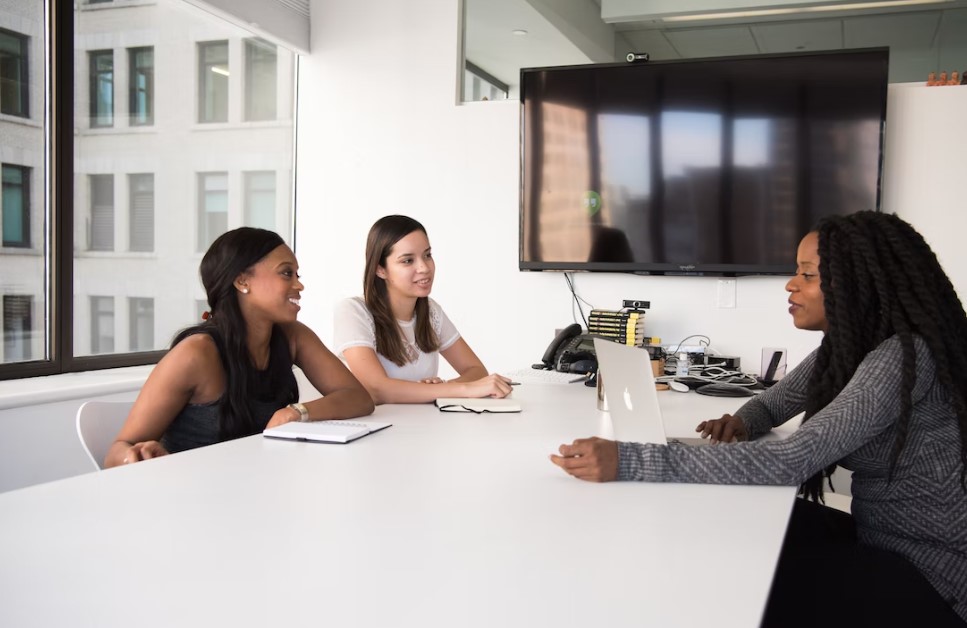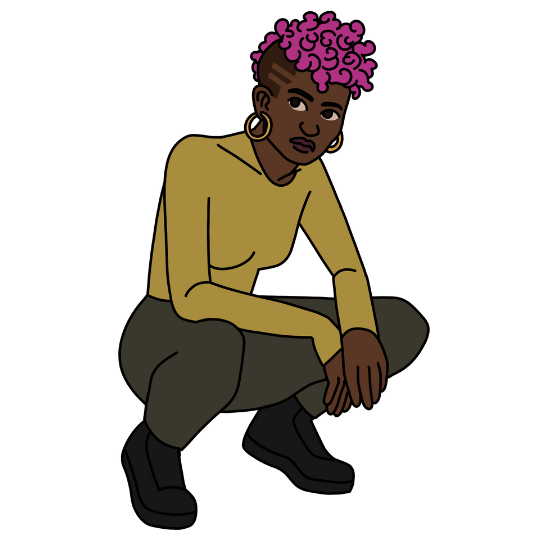How To Be More Neuro-Inclusive at Work
Posted: 22 Feb 2023This month’s focus for the Safe In Our World team has been looking at neurodiversity and how it intersects with our mental health. In this interview, we spoke to Dom Shaw from Ukie’s Raise The Game about being neuro-inclusive at work.
The games industry has a growing number of neurodiverse employees working within it, with 18% of UK Games Developers identifying as neurodiverse in 2021, (a 7% rise from 2020)[1].
The Interview
Common Stigmas and Misunderstanding
Rosie: Are there any common stigmas or misunderstandings about neurodiversity and mental health?
Dom: Yes I’ve definitely experienced stigmas for both. I think some of the most common ones, which we still see prevalent in wider society, are people think neurodiverse people are a set way and they always try to create separation. I think that’s what makes it harder to create understanding. Instead of being mindful of set traits that are often related to neurodiversity, people take them and make those traits their unmoveable guidelines in terms of their understanding and are not willing to be flexible with that understanding. If people think of individuals as individuals regardless of whether they’re neurodiverse or not, it shouldn’t make it a factor of change.
You might have to put more adjustments or reasonable accommodations into how you interact, but at the end of the day, when people think people are people, it becomes a much more inclusive approach. Unlike some forms of diversity – neurodiversity, many forms of disability, and mental health are invisible. People can be so appearance driven that actually you’re already entering conversations with big biases.
You can go into an interaction thinking ‘I’m just going to be a person and discover more about them.’ If you discover they’re neurodiverse or they have mental health conditions for example, instead of being like “whoa” you can just be like “I want to read more of this book.”

Rosie: It’s nice to hear because I think a lot of the time, people do have pre-conceptions about people based on how they look, right? So you often hear people saying, “oh, you don’t look depressed/disabled/neurodiverse” and it’s like… there is no categorical criteria that someone needs to fill to be able to hit your expectation of how they should be presenting. You know what I mean?
Dom: Absolutely. Another big thing for me specifically around neurodiversity is misinformation. Recently, I discovered that a charity known for their controversial views about autism have created a project with a name that is aggressive and promotes misinformation from the get go through the name itself stating autism is curable. Charities and organisations who exist and create miscommunication don’t help an already uphill battle for greater awareness and understanding across communities let alone the world.
I literally spent about four hours awake furious when I saw this name detail at midnight the other week, thinking I am not something to be cured. Neurodiversity is a part of me, my autism is a part of me.
Miscommunication and misinformation is really a big factor of that understanding gap. A key thing to note in terms of identifying that misinformation is specifically the language that is used. In the case of my example, the charity literally frames their language as ‘Autism is a disease’, which is quite negative. When organisations talk about strengths of being neurodivergent, how you can support or put in reasonable adjustments in, and have this open minded approach – that is where you will often find useful and reliable information. For instance – although you may not be as skilled as some people at socializing, your strength will lay elsewhere like having periods of hyperfocus toward work or the ability to analyse situations with pure logic. Again, it kind of relates to the previous aspect of not having preconceptions or inflexible understanding.
Rosie: I couldn’t agree more and I think it adds that element of shame into people who experience this. It can be the same across the board such as within disabilities and mental health as well, is that often the language used around them is exclusively negative.
Maybe it makes you feel more ashamed to be more transparent about who you are with the people around you in case they have an adverse reaction to it.
Language is one the most important things about changing that stigma around neurodiversity, mental health, and all of these things because it ultimately sets the tone for the conversation you’re about to have doesn’t it?
Dom: Exactly. You know, there was this student I was helping last year, and an element of their story made me feel sad for them. They came to me because they knew they were neurodivergent, and they wanted to get a career in games but they didn’t feel comfortable being open about it due to bad experiences of bullying in the past. That made me really upset to hear, but equally but I can absolutely understand having been bullied as myself. That’s the worst case – when a bias and an expectation turns into harassment and bullying.
This is why it’s so important when interacting with young students and kids that positive tones and language are used, they are inspired to learn and love who they are. Otherwise children could absorb negative context, create misinformation and unconsciously either learn to dislike a part of themselves if they are neurodivergent or potentially become bullies through learned behaviours and attitudes.
It’s about using information about neurodiversity as an entry point, and exploring and discovering the depths to really gain greater understanding.

Workplace Neuro-Inclusivity
Rosie: With that in mind, what can employers do to be more neuro-inclusive but also have that attitude from the offset? For example if someone is looking to get into an industry or get a job, and they don’t know whether or not to disclose that they’re autistic, they don’t know whether to disclose that they have depression. All of these different things are concerns because they aren’t sure if it’s a safe environment yet. I’d love to focus on what employers can do to make people feel safer, and not have to hide that at that level.
Dom:Even before we get to the interview stage, or bringing on new people, companies can ensure that their websites and social media are always using inclusive language. I’m thinking about gender neutral terms and intersectional aspects in job ads as for example a lot of neurodiverse people generally end up also being LGBTQIA+ identifying, and may not conform to the general male/female gender IDs. Considering these elements don’t just make for creating good understanding, but incorporating other forms of diversity as well.
Being intersectionally inclusive with your language is one step you can do. You can put on activities around certain milestones in the calendar, such as World Autism Acceptance Week or World Mental Health Day. But equally if your company can share some of those internal activities or guidance through your socials, people will know you’re actually thinking about these topics. You don’t have to give a master class, but if you put some presence into your comms, it shows you actually have an interest.
For example, a company could post a piece about World Autism Acceptance Week, but then they could do a general neurodiversity piece in July to show actually “this is a continued focus for us, we’re not just doing it for a set date”.
Another key thing with job ads is being really clear with what’s required and what’s desirable. Often people from under-represented groups will look at job ads that we think ‘I could be good at this, but I don’t fit every piece of required criteria’, when in reality the company only needs 3 points in the job description filled and the rest are desirable and could be flexible to change based on elements of the person to make the role what it is. It’s not only thinking of people’s anxieties, but shows you are welcoming people from different experiences, with transferable skill sets and thinking about invisible diversities.

Let’s say someone gets through the job post and applies. There are things companies can do to make their experience positive throughout the interview stage as well, such as sending questions ahead of time. Regardless of whether it’s mental health or neurodiversity, applicants can process questions in their own time, or knowing they won’t be surprised. It’s not just the questions – highlighting who they are going to meet. Especially if there are multiple stages of interviews – it allows them to understand the expectations and preparations for the interview.
Again, it takes down a lot of pressure but allows effective planning.
Rosie: I think it’s also a bigger strategy in being able to create a more diverse workforce in general. What you said about the necessary criteria for the role really resonated, because I know so many people capable of doing jobs, but because of the way they have been treated by society, they don’t feel they are equipped enough, despite having all the skills to be able to thrive.
By offering a more flexible way to hire people, communicate with people, and work with them, it gives them the confidence they need to be able to apply to do things that they can absolutely do. We need to see more companies welcoming neurodiverse people and seeing them as assets rather than barriers – what might be a barrier to you is a huge asset for another person, and having lots of different ways to communicate is a good thing!
Sometimes people miss that, and think this because they’ve always done something a certain way, it must always be done that way. But we need to embrace people’s differences and think what can we add, adapt and/or alter to make people feel included.
Dom:I couldn’t agree more. Often an analogy I use to describe a culture of fitting in is a cargo plane where all the animals are caged up and miserable. You can still see some individual creatures, but you mainly see the cold metal of the cages. If you create a culture that thinks about itself as Lego – You can take it anywhere. You can build Lego cities. You can create Lego themes like Star Wars with guidance. The possibilities are endless! If you think about what we can add, rather than what needs to fit in, it doesn’t only help one form of diversity but has intersectionality across the board to create cultures that are people centric, empower inclusion and always moving forward!
I think that the key to being neuro-inclusive is considering going beyond ourselves with inclusion and intersectionality in mind. It’s thinking about what you can’t see, and instead of thinking ‘we’ve got to try and see it’, instead we consider ‘what can we do to make it welcoming and see the bigger picture?’

